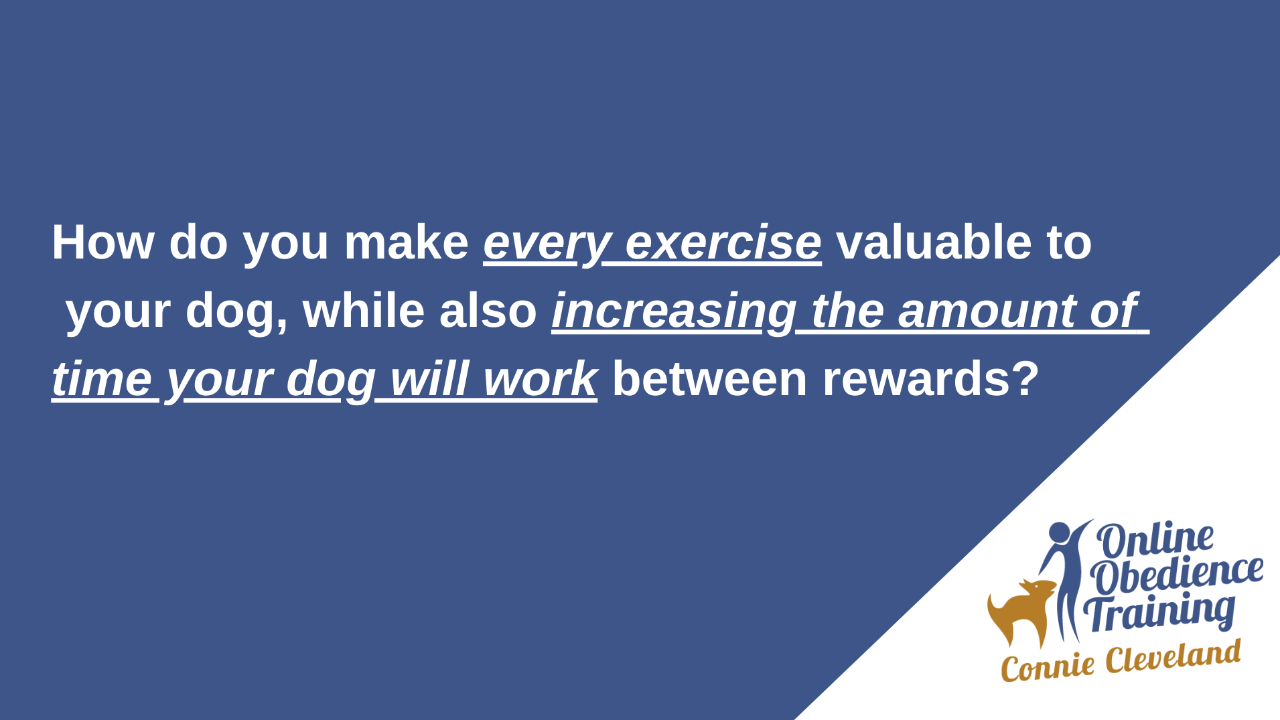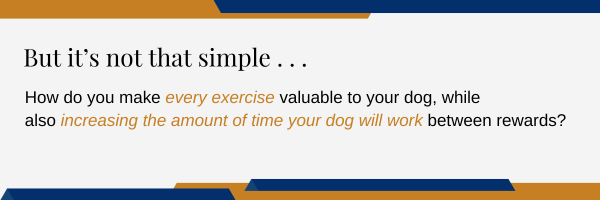How Do You Increase the Amount of Time Your Dog Will Perform?
Jul 16, 2023
Last week, I gave a webinar titled, “What Makes Obedience Hard?”
We all know how challenging it is to teach our dogs to love Obedience exercises that are not naturally motivating. However, if we consistently connect a behavior to a reward using a Reward Marker (conditioned secondary reinforcer), the behavior itself becomes rewarding.

The importance of randomizing rewards was made clear to me while helping my husband train detection dogs. Imagine a dog is tasked with checking eight rooms for explosives. It is very difficult to practice without the reward becoming predictable. Trainers are influenced by what they perceive is the dog’s need for reward, so it is tempting to put the reward in the first room to “help” the dog get started, or the last room to “reward” him for all his effort.
Very early in the training process, my husband uses a random number generator to determine when the dog will be rewarded. Inputting the number of rewards (ie. 2) and the number of rooms (8), the random number generator produces two numbers and those become the rooms that contain explosives.
Imagine that the numbers generated are 1 and 2. That means that the dog will find explosives in the first two rooms searched, and then search 6 rooms without a find. Hmm... How would you feel if you finished a training session with a “good dog, thanks for searching,” but without the powerful reward of a find?
Then imagine the next day, the numbers generated were 6 and 7. Now the dog searches six more rooms before a find. That is, the dog has searched 12 rooms since his last find/reward.
Few of us would be comfortable with that ratio of finds and rewards. Given our thoughts about training, and dog behavior, few of us would choose that to be the outcome.
It is very difficult to be random in your rewards. Instead, we are guided by emotion and the feedback we perceive from the dog.
However, our goal is for our obedience performance to last 5-8 minutes, with a dog that is attentive and engaged. During that performance every dog is asked to perform tasks that he may not find naturally interesting whether that be heeling, fronts, finishes, pivots, or moving from one exercise to another.
- Create value in performing those tasks by connecting them to reward with a reward marker.
- Next, using a reward marker, reward those tasks intermittently, but unpredictably. Rewarding 50% of the time does not mean every other, it means 5 of 10. Randomizing reward means your dog is certain his behavior can make reward happen but is not sure when it will occur.
- When your dog starts to enjoy those difficult skills, continue to randomly reward those skills throughout your training session, increasing the repetitions between rewards.
In case you missed the webinar, I will share more information next week.
Did you enjoy the article?
Sign up to receive more free training TIPS & TRICKS from Connie.

